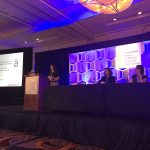In recent years, open access has provided new audiences, including patients, the general public and doctors in low and middle income countries (LMICs), with direct, free access to the results of scientific research. However, this access is still not as widespread as it could be, as the International Agency for Research on Cancer has said: “In 2010, the total annual … cost of cancer was estimated to reach … US$ 1.16 trillion. Yet about half of all cancers could be avoided if current knowledge was adequately implemented.”
Open access is providing exciting new opportunities for health improvement in LMICs. This is urgently needed because there are huge gaps in the education and training of healthcare professionals (HCPs) in developing countries. Expensive medical technology is often absent in LMICs, but this is not the only problem – there is also a lack of high-quality education for HCPs and the public.
The effects of this paucity of information can be seen with the rise of cervical cancer in India – although there are human papillomavirus (HPV) vaccination programmes in place, there are significant adherence issues. The Pan American Health Organization estimates that approximately 70% of cervical cancer cases could be avoided through HPV vaccination of adolescent girls. Yet, despite the high burden of HPV-associated illnesses and mortality and the proven effectiveness of HPV vaccines, many people in India who could benefit from the vaccines still do not receive them. There is solid evidence that the education of HCPs greatly improves uptake of the vaccine and adherence to the full vaccination programme.
A powerful way to break down many of the barriers to education and information that people in LMICs face is to provide open access materials such as peer-reviewed journal articles, online educational modules and videos of experts discussing the latest treatments.
Unfortunately, although open access means that far more people are able to read papers, it can sometimes be a barrier to authors, who often cannot afford the article processing charges (APCs) required for gold open access journals. Critics of gold open access have said that it may be creating new inequalities and disadvantaging the very people whom it aims to benefit. New publication models are being created to address these financial issues, and it was with this aim that ecancermedicalscience launched its novel ‘pay what you can afford (PWYCA)’ publication model in 2014.
Because many large funders of biomedical research now mandate that the results of that research must be freely accessible, more and more authors can access funding to publish their papers open access, but the majority of these are from high-income countries. To take advantage of these policies, ecancermedicalscience does not charge a blanket APC; instead, authors may transfer (upon manuscript acceptance after peer review) the open access publication fee from their funder. However, if an author does not have the resources to pay, the APC is waived. In this way, the journal can publish research from LMICs and from authors who have limited or no funding, but those authors who have access to funds for publication are able to donate them to the journal. The suggested APC is set at £1000, but authors are welcome to pay any amount they can afford.
This publishing model is still quite new, and APCs currently only fund a small minority of the operating costs of running ecancermedicalscience, which relies mainly on charitable donations, sponsorship, grants and the income generated from running educational activities and events. Submissions to the journal initially decreased by approximately 20%, although this cannot be conclusively linked to the new payment model; however, submissions recovered to their former level within five months. This is in line with the experience of other publishers who have experimented with this model.
ecancer is not relying on the PWYCA model as a business model alone – so far, it has not been a robust enough income stream to support the journal completely, and it would be optimistic for publishers to rely solely on this to pay their costs. However, the PWYCA model is still at an early stage, and experiments with it have yielded very positive results in other fields. There has been a lot of positive feedback from authors in LMICs – the journal provides free copyediting for authors who do not have English as a first language, as well as free translation and publication of Spanish-language manuscripts. This helps to level the playing field because language barriers, often combined with financial constraints, significantly affect the dissemination of regional-relevant content.
ecancer’s model can be replicated in other fields to break down financial, linguistic and geographical barriers to the education of healthcare professionals. The international growth in support of open access is key to improving the quality of medical education in LMICs – every year, 7.9 million people die of cancer worldwide, and approximately 75% of these deaths occur in developing countries. If doctors and researchers are unable to access essential knowledge on how to treat their patients, this can be the difference between morbidity and mortality. As ecancermedicalscience author Dr Pan Pantziarka of the Anticancer Fund has said: “open access is a case of saving money and lives, it isn’t just about medical breakthroughs, it’s about social necessity worldwide.”
References
[1] Piwowar H, Priem J, Larivière V, Alperin JP, Matthias L, Norlander B, Farley A, West J and Haustein S (2018) The State of OA: A large-scale analysis of the prevalence and impact of Open Access articles PeerJ 6 e4375
[2] Archambault É, Amyot D, Deschamps P, Nicol AF, Provencher F, Rebout L and Roberge G (2014) Proportion of open access papers published in peer-reviewed journals at the European and world levels–1996–2013 European Commission
[3] Kenny R and Warden R (2011) An Open Access future? Report from the eurocancercoms project ecancermedicalscience 5 223
[4] Registry of Open Access Repository Mandates and Policies (ROARMAP) https://roarmap.eprints.org/ Accessed October 2018
[5] https://ismpp-newsletter.com/2018/01/30/shire-announces-new-open-access-policy/
[6] Vickery, B (2015) Pay‐what‐you‐want APC model Paper presented at the Conference of the Open Access Scholarly Publishers (COASP) 2015, Amsterdam, The Netherlands. Retrieved from https://oaspa.org/conference/presentations-coasp-2015/
[7] World Health Organization (2006) World Health Report 2006: Working Together for Health (Geneva: WHO) www.who.int/whr/2006/en
[9] EPG Communications Group (2018) Scientific Meetings in the Digital Age https://www.epghealthmedia.com/pharmaceutical-industry-reports/scientific-meetings-in-the-digital-age-study.html
Katie Foxall is Head of Publishing at ecancer, a not-for-profit, open access, independent medical education platform, committed to improving cancer communication and education. ecancer is supported by the ecancer Global Foundation, a UK-registered charity.






